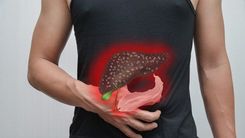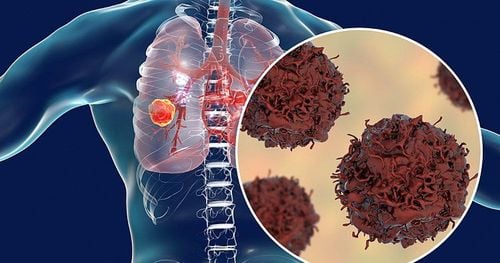The survival rate for cancer depends greatly on the type of cancer and the time of diagnosis. Among the six deadliest cancers, do you know which one tops the list?
1. Survival rates of fatal cancers
Can people survive cancer? This is a common question that many people are concerned about today. Over the past 40 years, the cancer survival rates have doubled. While only 25% of people with cancer could survive in the 1970s, today this rate has increased to 50%. However, cancer survival rates vary significantly depending on the type of cancer and the stage of diagnosis.
According to a cancer research organization in the UK, the survival rate for testicular cancer or prostate cancer is 98%, while pancreatic cancer patients have only a 1% chance of survival.
Early diagnosis is crucial for improving the chances of survival and quality of life for cancer patients, especially for those with cancers that have lower survival rates.
1.1. Which cancer has the lowest survival rate?
There are 6 cancers with low survival rates, which are lung cancer, liver cancer, brain cancer, esophageal cancer, stomach cancer, colon cancer, and rectal cancer. According to experts, the above 6 cancers have low survival rates mainly because these diseases are challenging to detect.
1.2. Warning signs of cancer with low survival rates
Cancers with low survival rates that patients should not ignore the warning signs:
- Brain cancer: The patient has problems with vision and speech, headaches, nausea, seizures, and behavioral changes.
- Liver cancer: The patient has unintentional weight loss, loss of appetite, nausea, fatigue, fever, pain or swelling in the abdomen, yellow skin, itchy skin, vomiting blood, and dark urine.
- Lung cancer: There may be a persistent cough, the patient coughs up blood, chest pain, unintentional weight loss, loss of appetite, shortness of breath, fatigue, or weakness.
- Esophageal cancer: Difficulty swallowing, indigestion, heartburn, loss of appetite, vomiting, abdominal pain, chest pain or back pain, persistent cough, hoarseness, fatigue, and shortness of breath.
- Pancreatic cancer: Back pain, abdominal pain, loss of appetite, unintentional weight loss, yellow skin and whites of the eyes, indigestion, change in urination habits.
- Stomach cancer: Indigestion, difficulty swallowing, heartburn, bloating or feeling full after eating very little, nausea, abdominal pain, pain in the sternum, unintentional weight loss.
2. Signs of cancer with the lowest cancer survival rate
Pancreatic cancer is the sixth most malignant cancer among cancers of the digestive tract. The overall 5-year survival rate for all stages is usually below 4%.
Today, pancreatic cancer is still the most feared cancer because of its very high mortality rate. The pancreas is an organ that plays an important role in the body, specifically in the process of digesting food.
The pancreas is a gland located behind the stomach and in front of the spine. The pancreas produces digestive juices and hormones that regulate blood sugar levels. Exocrine pancreatic cells produce digestive juices, while endocrine pancreatic cells produce hormones. The exact cause of pancreatic cancer remains unclear. However, several risk factors have been identified, including smoking, obesity, genetics, diabetes, diet, and a sedentary lifestyle. People with a family history of pancreatic cancer are also at high risk.
3. Does having cancer mean death?
The question "How long can you live with cancer?" is always a top concern for many patients and their families. Most people want to know this to predict and plan for things in the present and the future.
It is very difficult to determine the time when cancer patients will die and how long they can live. This depends on many factors, such as:
- The type of cancer the patient is suffering from: There are types of cancer that have a very good prognosis, and the patient's life will be longer than other types of cancer, such as thyroid cancer, prostate cancer, skin cancer, ...
- The patient's spirit and physical condition: When facing cancer, patients often have 2 streams of thought:
- Positive thinking: Believe that good things will come to them and the treatment will be successful.
- Negative thinking: These patients always think of bad things, not positive things will happen.
For patients who often have negative thoughts, their overall health and the effectiveness of treatment will be significantly affected, leading to a shorter life span than the patients who are always optimistic and believe in the future.
- Time of disease detection: It can be said that this is an important factor in determining how long a cancer patient can live. The earlier the disease is detected in the early stages, the more beneficial it is for the patient and vice versa.
- Age of the patient: Usually, young cancer patients have a better recovery ability than the elderly, and therefore young patients will have a longer life span than the elderly. Except for patients with acute leukemia, young people often have a worse prognosis than the elderly.
- Other factors: The length of a cancer patient's life depends on each patient's understanding and economic conditions.
4. How long can a patient with metastatic cancer live?
How long can a patient with metastatic cancer live is a concern for all patients and their loved ones. In fact, in addition to the stage of cancer progression, the prognosis for cancer patients depends on many other factors such as the type of cancer, age, general health status of the patient (comorbidities), response to treatment, etc.
Compared to early-stage cancer, the prognosis for patients with metastatic cancer is often much more reserved. However, if treatment support is considered, the patient can still improve their condition and prolong their life.
According to the American Cancer Society, the 5-year cancer survival rate for some common cancers in the late stages is:
- Colon cancer: 11%
- Rectal cancer: 12%
- Breast cancer: 21%
- Prostate cancer: 29%
- Thyroid cancer 28 – 51%...
However, there are some misconceptions about cancer, the most common of which is that a cancer diagnosis is a death sentence and treatment can prolong life for a short time. The consequences of these misconceptions lead to excessive pessimism, giving up, and non-compliance with treatment.
In fact, with advancements in medical science, many people have been cured or can significantly extend their lives depending on the type of cancer and the stage of the disease. Some types of cancer have a 5-year cure rate exceeding 90% if detected early and treated promptly, such as thyroid cancer, breast cancer, prostate cancer, colon cancer...
Please dial HOTLINE for more information or register for an appointment HERE. Download MyVinmec app to make appointments faster and to manage your bookings easily.













